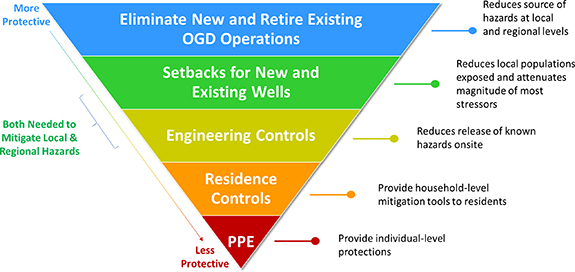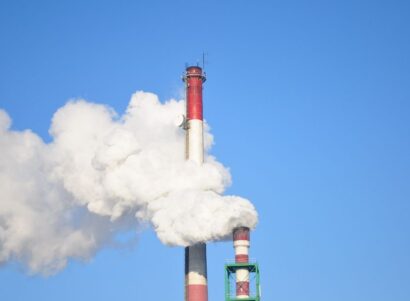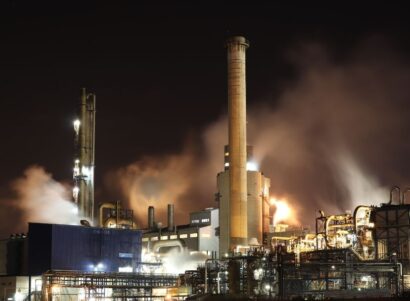Background
An estimated 17.6 million Americans live within one mile of an active oil or gas well. A growing body of scientific evidence associates oil and gas development with a range of adverse health and environmental impacts, which are particularly acute within communities living in close proximity to industrial sites. State and federal policy to reduce these impacts frequently focuses on a single mitigation strategy.
In Multi-layered strategies needed to protect public health from oil and gas drilling impacts, published in Environmental Research Letters, public health experts evaluate existing mitigation strategies and provide a framework for policymakers to maximize the public health benefits.
Findings
The paper provides an adapted hierarchy of controls, a tool typically employed by occupational health and industrial hygiene professionals, to help policymakers identify the most effective strategies for mitigating health impacts of oil and gas development.

The application of near-term and long-term approaches in this hierarchy is needed to address oil and gas development hazards more adequately and better protect community health.
Recommendations
The authors recommend taking an integrated approach that leverages multiple protective strategies at once, such as coupling oil and gas setbacks with engineering controls. The authors also recommend additional research that compares the relative value of hazards, exposure pathways, and mitigation strategies. The hierarchy of controls suggests that eliminating new and retiring existing oil and gas development is the most effective strategy to reduce public health hazards from oil and gas development.

 Study
Study






